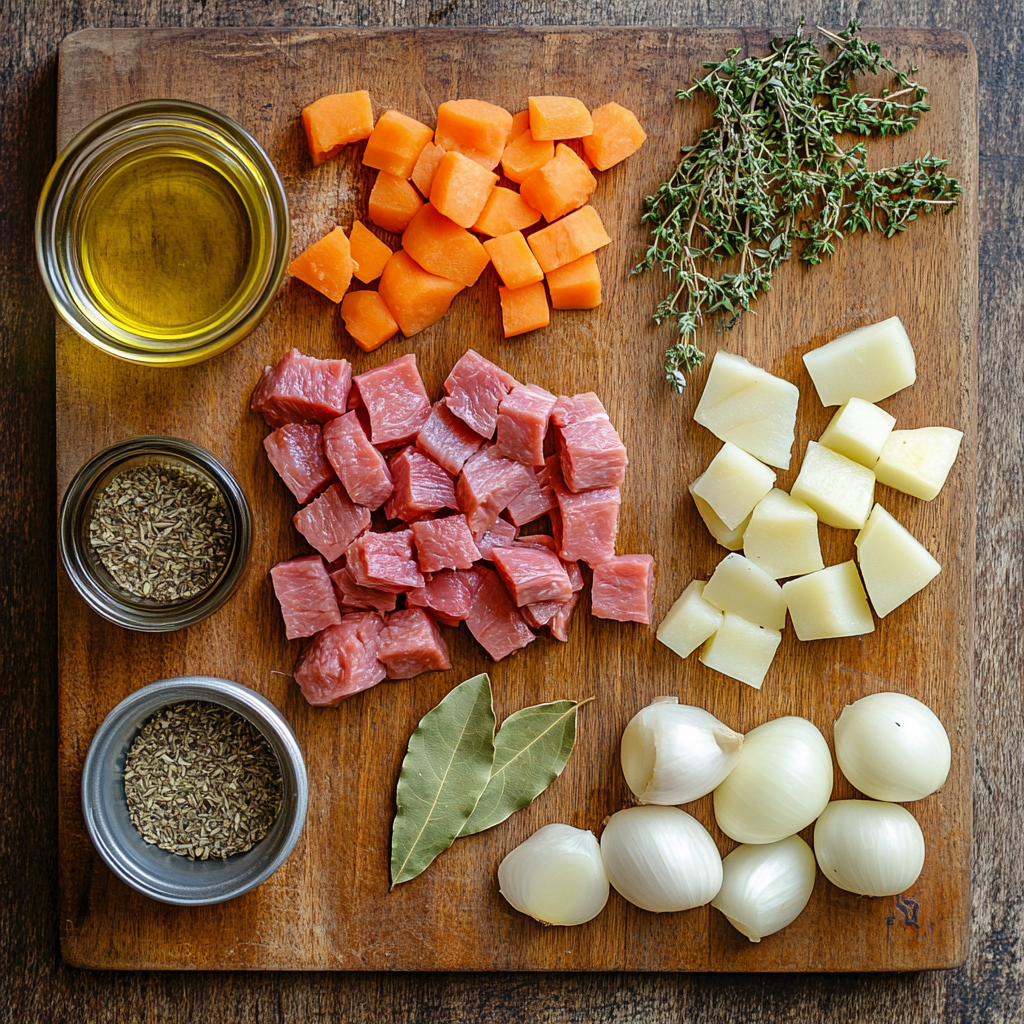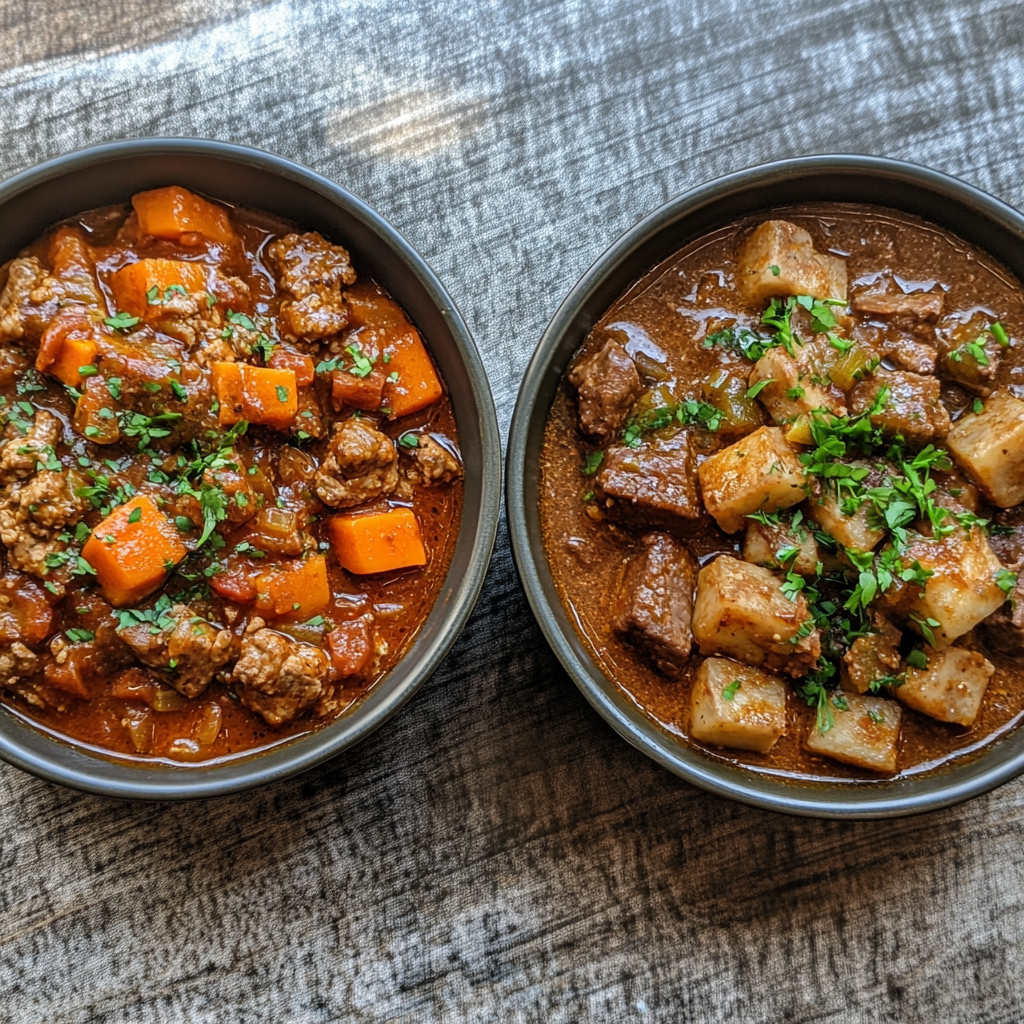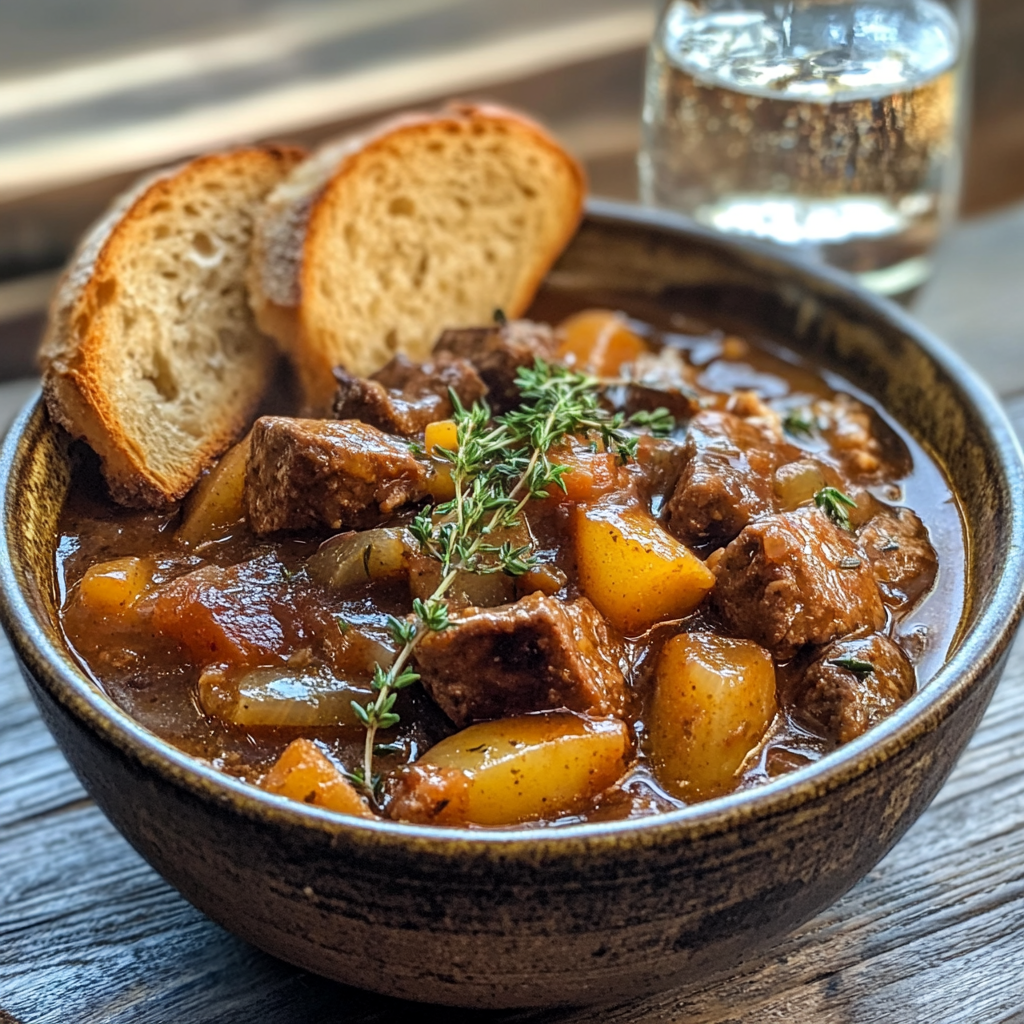Canned deer meat, or canning venison, offers an excellent solution for preserving wild game while providing a lean, flavorful protein source that can be used in various meals. Whether you’re an experienced hunter looking to preserve your harvest or simply a home cook seeking a new culinary adventure, this canned deer recipe will transform your pantry staple into a mouthwatering dish perfect for any occasion. In this comprehensive guide, you’ll learn everything from the best ingredients to use to expert tips for ensuring success, all while learning about pressure canning, raw pack, and water bath methods.
Whether you’re new to canning meat or a seasoned pro, this recipe is easy to follow and incredibly versatile. Plus, it’s perfect for family dinners or impressing guests with a unique, rustic meal.
Ingredients Overview: Key Ingredients for the Perfect Canned Deer Recipe
When making a dish with canned venison, it’s important to focus on ingredients that complement the rich, earthy flavor of the meat. Here’s a detailed breakdown of the essential ingredients you’ll need, along with possible substitutions to cater to various dietary preferences.
Main Ingredients:
- Canned deer meat (2 cups): The star of the show, this meat offers a robust, gamey flavor that’s perfect for a hearty stew.
- Olive oil (2 tablespoons): Provides a smooth, healthy fat that enriches the dish’s overall texture and mouthfeel.
- Onion (1 medium, chopped): A key aromatic, onions bring sweetness and depth to the stew.
- Garlic (3 cloves, minced): A savory staple that enhances the flavors of the venison.
- Carrots (2 medium, diced): Add natural sweetness and texture to the stew.
- Potatoes (2 large, diced): The starch from the potatoes adds body to the stew and absorbs the flavors of the broth.
- Beef broth (1 cup): Forms the flavorful base of the stew and ties all the ingredients together.
- Bay leaves (2): Used to infuse the stew with a subtle, fragrant flavor.
- Thyme (1 teaspoon): Adds a hint of herbal freshness, cutting through the richness of the meat.
- Salt and pepper (to taste): Essential for seasoning and balancing all flavors.
Substitutions and Dietary Adjustments:
- Gluten-free: Ensure the broth used is gluten-free, as some commercial broths contain gluten as a thickener.
- Low-carb: Replace potatoes with lower-carb vegetables like zucchini or cauliflower to make the dish more suitable for low-carb diets.
Canning meat is a great way to preserve venison, especially if you’re using methods like pressure canning with a pressure canner. Venison can be preserved using both the raw pack or hot pack methods, though the raw pack is generally preferred for meats to maintain texture and flavor. If you’re interested in light, healthy appetizers to complement this hearty dish, explore our Snacks section for some fantastic pairing ideas!

Tools Needed for Cooking and Canning Venison
To make this canned deer recipe, you’ll need several essential tools for both cooking and preserving. Here’s a breakdown of the equipment required for both the canning process and preparing the stew, including tips on alternatives you may have at home.
Essential Kitchen Tools:
- Large skillet or Dutch oven: These are ideal for browning the venison and sautéing the vegetables before simmering the stew.
- Sharp knife: A quality knife is crucial for precisely cutting vegetables, allowing for even cooking and an appealing presentation.
- Cutting board: A sturdy cutting board helps you prep your ingredients efficiently and safely.
- Wooden spoon: Useful for stirring the stew without scratching the bottom of your skillet or Dutch oven.
- Measuring cups and spoons: Ensuring accurate measurements of liquid and seasoning is essential for balancing flavors.
- Pressure canner: If you’re interested in canning venison, a pressure canner is a must for safe preservation. Venison is a low-acid food, which means it must be processed at high temperatures in a pressure canner rather than using the water bath method.
- Jars and lids: For pressure canning, you’ll need sterilized jars and proper canning lids to store the venison safely.
- Tongs: Use tongs to handle hot jars safely during the canning process.
Alternatives for Common Kitchen Tools:
- If you don’t have a pressure canner, a regular pressure cooker will not suffice for canning venison. You must use a pressure canner to ensure food safety when preserving meats.
For more ideas on dishes that use similar tools, be sure to visit our Dinner section. You’ll find plenty of recipes that require basic kitchen equipment, making them perfect for everyday cooking.
Step-by-Step Instructions for Preparing Canned Deer Stew
Let’s get into the nitty-gritty of cooking this delicious canned deer recipe. Whether you’re a novice cook or an experienced chef, these step-by-step instructions will guide you through each part of the process, from sautéing to simmering. This method is simple and approachable, making it easy to enjoy the flavors of canned venison at home.
Step 1: Prepare Your Ingredients
Before you start cooking, gather all your ingredients. Begin by draining the canned deer meat and setting it aside. Next, dice your potatoes, carrots, and onions, and mince the garlic. Having everything ready ahead of time ensures a smooth cooking process, reducing stress in the kitchen.
Step 2: Sauté the Aromatics
In a large skillet or Dutch oven, heat the olive oil over medium heat. Add the chopped onions and minced garlic, sautéing until softened and translucent. This process takes about 5 minutes, during which the onions release their natural sweetness and the garlic infuses the oil with flavor.
Step 3: Add the Vegetables
Once your onions and garlic are fragrant and golden, stir in the diced carrots and potatoes. Allow the vegetables to cook for another 5-7 minutes, ensuring they begin to soften before adding the meat. These vegetables are essential to the stew’s texture and overall heartiness, absorbing the flavors of the broth and seasonings beautifully.
Step 4: Brown the Canned Venison
Next, it’s time to add the canned deer meat to the skillet. Although it’s already cooked, browning it enhances the flavors and gives the meat a slightly crisp edge. Stir the venison into the vegetables, allowing the mixture to cook for an additional 3-4 minutes.
Step 5: Add the Broth and Seasonings
Pour in the beef broth, then add the bay leaves and thyme to the pot. Stir well to combine all the ingredients. Bring the stew to a boil, then reduce the heat and let it simmer uncovered for 20-25 minutes. During this time, the flavors meld together, and the vegetables become tender.
Step 6: Adjust the Seasoning and Serve
Finally, taste the stew and adjust the seasoning with salt and pepper according to your preferences. Once you’re satisfied with the flavors, remove the bay leaves and serve hot. You can garnish the stew with fresh thyme or parsley for a burst of color and added flavor.
This method makes the stew rich and flavorful without being complicated, perfect for weeknight meals or special occasions. For a similar cooking technique, you can check out our Breakfast recipes, many of which also involve slow-simmering methods for deep flavor development.
Flavor Variations for Canned Deer Stew
One of the best things about this canned deer recipe is its versatility. The robust flavor of canned venison pairs well with a variety of spices and vegetables, allowing you to customize the dish to your liking. Below are several flavor variations and substitutions to try.
Smoky and Spicy Version:
For those who love a little heat and smokiness in their meals, this variation is for you:
- Replace the thyme with smoked paprika to infuse the dish with a rich, smoky flavor.
- Add a dash of chipotle chili powder or cayenne pepper for a spicy kick.
- Toss in some diced tomatoes for added acidity and richness.
Fresh and Herbaceous Version:
For a lighter, more herb-forward flavor, you can tweak the recipe like this:
- Swap out thyme for rosemary and sage, two herbs that pair beautifully with game meats like venison.
- Add a splash of lemon juice right before serving to brighten the dish and balance the rich meatiness of the venison.
- Garnish with fresh parsley or chopped chives for an extra burst of color and freshness.
Vegan Option:
If you’re serving a mixed crowd or want to provide a vegan alternative, this variation works wonders:
- Replace the canned venison with seitan or portobello mushrooms. Both options offer a meaty texture and rich flavor that complement the other ingredients.
- Use vegetable broth instead of beef broth to maintain a depth of flavor without using animal products.
These variations allow you to adapt the recipe for various palates and dietary preferences. The vegan version, in particular, works well when paired with light sides like roasted vegetables or grain-based salads, which you can find in our Snacks section.

Expert Tips for Cooking with Canned Venison
Canning venison is a great way to preserve the meat, but cooking with it requires a bit of know-how to achieve the best results. Here are some expert tips to help you perfect your canned deer stew and avoid common mistakes.
Tip 1: Always Brown the Meat
Even though the venison is already cooked during the canning process, browning it in a skillet enhances its flavor and texture. This extra step adds depth and ensures the meat isn’t overly soft when added to the stew.
Tip 2: Use Low-Sodium Broth
Venison, particularly when canned, can sometimes be quite rich. Using a low-sodium broth allows you to control the salt content better, ensuring the dish doesn’t become overly salty. You can always add more salt if needed but can’t remove it once added.
Tip 3: Slow Simmer for Best Results
Simmering the stew for a good 20-25 minutes is crucial for allowing the flavors to develop. Don’t rush this step, as the extra time helps the vegetables soften, and the flavors meld together beautifully.
Tip 4: Proper Canning Techniques for Future Use
If you plan to try your hand at pressure canning venison at home, make sure you follow the proper methods, whether you choose the hot pack or raw pack method. This ensures safe storage and preserves the meat’s flavor and texture. Always use a pressure canner for meats, as the water bath method is insufficient for safely preserving low-acid foods like venison.
These tips will help you make the most out of your canned venison, ensuring a delicious, well-rounded dish every time. If you enjoy recipes that involve simmering and slow-cooking, check out our Dinner section for similar dishes that rely on these same techniques.
Nutritional Information: Health Benefits of Canned Deer Meat
Canned deer meat is not only flavorful but also a healthy choice for those looking to increase their protein intake without consuming too many calories or unhealthy fats. Here’s a quick look at the nutritional benefits of this canned deer stew.
Nutritional Breakdown (per serving):
- Calories: Approximately 350 per serving
- Protein: 25 grams
- Carbohydrates: 30 grams (from vegetables)
- Fat: 10 grams (primarily from olive oil)
- Fiber: 5 grams
- Vitamins: High in B-vitamins, particularly B12, which supports red blood cell production and energy metabolism.
Venison is a lean meat, much lower in fat than traditional red meats like beef or pork. It’s also an excellent source of iron, which is vital for maintaining healthy blood cells.
Serving Suggestions: Perfect Sides and Drinks for Canned Deer Stew
Wondering what to serve with this delicious canned deer stew? Pairing the right sides and drinks can elevate the entire meal, making it a feast that everyone will enjoy. Here are some suggestions for sides and drinks that will complement the rich flavors of canned venison.
Recommended Sides:
- Crusty bread: Perfect for dipping into the rich broth of the stew.
- Wild rice or quinoa: These grains absorb the flavors of the stew while adding a chewy texture.
- Roasted vegetables: A side of roasted root vegetables like sweet potatoes, parsnips, or butternut squash complements the earthiness of the venison.
Drink Pairings:
- A refreshing glass of sparkling water or herbal tea makes for a light, palate-cleansing drink that balances the richness of the stew.
For more pairing ideas, take a look at our Dinner section, where you’ll find additional sides and drink suggestions to accompany hearty dishes like this one.

Storage Tips for Canned Deer Stew
If you have leftovers, don’t worry! This canned deer stew stores exceptionally well, making it a great option for meal prepping or saving for another day.
How to Store Leftovers:
- Refrigeration: Store the stew in an airtight container and refrigerate for up to 3 days. The flavors will continue to develop, making it even tastier after a day or two.
- Freezing: For longer storage, freeze the stew in individual portions for up to 3 months. Make sure the containers are freezer-safe and leave some room for expansion.
- Reheating: When reheating the stew, warm it over low heat to retain the flavors. Add a little bit of broth or water if the stew has thickened too much after storage.
These practical storage tips ensure you get the most out of your meal, whether you’re eating it today or saving it for later.
Frequently Asked Questions (FAQs)
Can I use fresh deer meat instead of canned?
Absolutely! If you have access to fresh venison, simply brown the meat thoroughly before adding it to the stew. The cooking time will need to be extended slightly to ensure the fresh venison is tender.
Is this recipe suitable for meal prep?
Yes! The flavors actually improve when the stew sits for a day or two, making it an excellent option for meal prep. You can store individual portions in the fridge or freezer for easy, nutritious meals throughout the week.
Can I add more vegetables to the stew?
Certainly! You can customize the stew by adding more vegetables like mushrooms, bell peppers, or even zucchini for extra texture and nutrients.
For more frequently asked questions related to meal prepping, be sure to explore our Lunch section, where you’ll find tips and recipes that are perfect for preparing ahead of time.
Conclusion: Why You Should Try This Canned Deer Recipe
Canned deer meat is an incredible ingredient that deserves a place in your kitchen. Not only is it convenient, but it’s also packed with lean protein, vitamins, and minerals that support a healthy diet. This stew, with its hearty vegetables and flavorful broth, is the perfect way to showcase the unique taste of canned venison. Plus, it’s versatile enough to accommodate various dietary preferences, from gluten-free to low-carb to vegan.
By mastering the art of cooking with canned venison, you’ll have a reliable, nutritious meal that can be enjoyed year-round. For more meal ideas and inspiration, check out other trusted sources like thehealthyfoodie.com.
